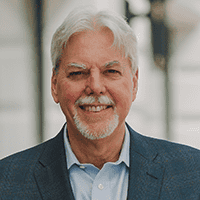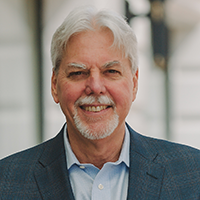
What is Rick Fairbank’s Endgame?
 Capital One Corp. CEO Rich Fairbank is a smart guy, but I think he needs to work on his timing. I mean really, who announces a major credit card portfolio acquisition on the same day that the Dow Jones Industrial Average drops 519.83 point – or 4.62 percent – for an 11-month low, particularly when big banks like Citigroup, Bank of America Corp. and J.P. Morgan Chase & Co. led the way down?
Capital One Corp. CEO Rich Fairbank is a smart guy, but I think he needs to work on his timing. I mean really, who announces a major credit card portfolio acquisition on the same day that the Dow Jones Industrial Average drops 519.83 point – or 4.62 percent – for an 11-month low, particularly when big banks like Citigroup, Bank of America Corp. and J.P. Morgan Chase & Co. led the way down?
On August 10, Capital One announced that it was acquiring the U.S. credit card business of HSBC Holdings PLC for approximately $2.6 billion, just as global equity markets were panicking over the combination of Standard & Poor’s historic downgrading of the United States’ credit rating, deep concerns about the wobbly financial state of major European countries like Italy and France, and the distinct possibility that the U.S. economy might be slipping back into another recession. This followed a deal announced in June, when Capital One acquired ING Direct, the U.S.-based online banking subsidiary of Dutch giant ING Groep, for $9 billion.
Of course, Capital One had been working on the HSBC deal for months – so the exact timing of the August 10 announcement wasn’t something that Fairbank had much control over. But if you know anything about Rich Fairbank you know he’s a fearless strategist who won’t hesitate to pull the trigger on an acquisition if he believes it’s the smart thing to do.
I wrote a story about Capital One in the second quarter 2006 issue of Bank Director that was based on extensive interviews with Fairbank and W. Ronald Dietz, a long-time director who currently serves as chairman of the bank’s audit and risk committee. Back then, Capital One was in the early stages of transforming itself from a consumer finance company whose principal product was credit cards to something that was more along the lines of a traditional commercial bank. It had recently acquired two regional banks, New Orleans-based Hibernia Corp. and Long Island-based North Fork Bancorp., and Fairbank spent a lot of time during the interview explaining why he did that. And in the process, Fairbank also revealed a lot about the way he thinks when he thinks about strategy, and it’s interesting to look at the ING and HSBC deals in the context of what he said about strategy five years ago.
Fairbank made these points in that 2006 interview:
- He foresaw the emergence of a bifurcated banking market in the United States where many consumer loan categories like credit cards, auto loans, home mortgages and student loans were being consolidated by large national players (think J.P. Morgan Chase in mortgages or Capital One in credit cards) that used their size and economies of scale to squeeze out community and regional banks — but where the deposit market remained under the control of those same community and regional players, which used their local connections to great competitive advantage. Fairbank concluded that Capital One had to be a factor in both markets, and so he embarked on an unusual national/local strategy that led to the Hibernia deal in 2005, the North Fork deal in 2006 and the acquisition of Chevy Chase Bank in 2008.
- He wanted to diversify both sides of the balance sheet, but especially the liability side. In the early 2000s, Fairbank might have been more fixated on funding than anything else. Prior to its regional bank acquisitions, Capital One funded itself primarily by raising money from institutional investors in the capital markets. But the Russian bond default in 1998 had roiled the global capital markets to such an extent that finance companies like Capital One were deeply concerned about whether they would still be able to fund their operations at any cost. I got the sense that the Russian debt crisis was a seminal event for Fairbank, and he concluded that Capital One needed access to retail banking deposits – which are inherently more stable than capital markets funding – if Capital One was to survive as an independent company.
- When he thinks about strategy, Fairbank always thinks about where the industry will be five years from now – not where it will be next year. Here’s what he had to say five years ago: “A strategy must begin with identifying where the market is going. What’s the end game and how is the company going to win? Typically companies work forward from where they are. And they think it is a bold move to change 10 percent from where they are. But when one starts from ‘This is the market, this is the end game, this is where the market is heading and this is the timing of when the market is likely to get there,’ you are faced with a very different kind of reality. It creates a much greater sense of urgency and allows the company to make bold moves from a position of strength.”
So, what observations can we make about Capital One’s most recent acquisitions in light of that 2006 interview? First, the HSBC deal would seem to signal the continued consolidation of the credit card market, and affirms Capital One as one of that industry’s major players. It might seem counter-intuitive (or, just plain dumb) to acquire another company’s credit card portfolio when we might be heading down the second leg of a double-dip recession, but Capital One is probably the most analytical company I’ve ever come across — they analyze everything! – so I assume they have factored in all of the likely economic scenarios, including a spike in loan losses if the economy does tank.
The upside? Capital One squeezes enough juice from the HSBC portfolio through cost saves and revenue enhancements that the deal is accretive to earnings in 2013, which is the company’s current projection. The answer to whether investors will support this transaction will probably come later this year or in early 2012, when the company plans on raising some $1.25 billion in fresh capital to maintain its Tier One capital level in the mid-9 percent range.
To me, the ING Direct acquisition was actually more interesting. Capital One says it will use ING’s consumer deposits to fund the HSBC credit card portfolio on an ongoing basis, and some commentators have tended to see the two deals as being linked, i.e. Capital One wouldn’t have bought ING Direct if it also wasn’t planning on acquiring the HSBC portfolio. But to me, HSBC was tactical while ING Direct was strategic. Not only did the ING Direct acquisition provide funding for the HSBC portfolio, it also diversified Capital One’s funding base into the online consumer space – and Fairbank has pursued the goal of greater funding diversification for a long time. Just as importantly, ING Direct gives Fairbank a platform that he can use to build a national online consumer bank, which is a completely different animal than a regional branch bank, and is a natural fit with Capital One’s credit card business. I think Fairbank’s endgame is to build a national consumer bank. My guess is that he has looked five years into the future and seen further consolidation of the consumer deposit market. He can try to build a national deposit franchise through additional brick-and-mortar acquisitions, but that is an expensive and time-consuming approach. The ING Direct deal gives him another strategic option that might be faster and cheaper – and more fitting with Fairbank’s sense of urgency.



